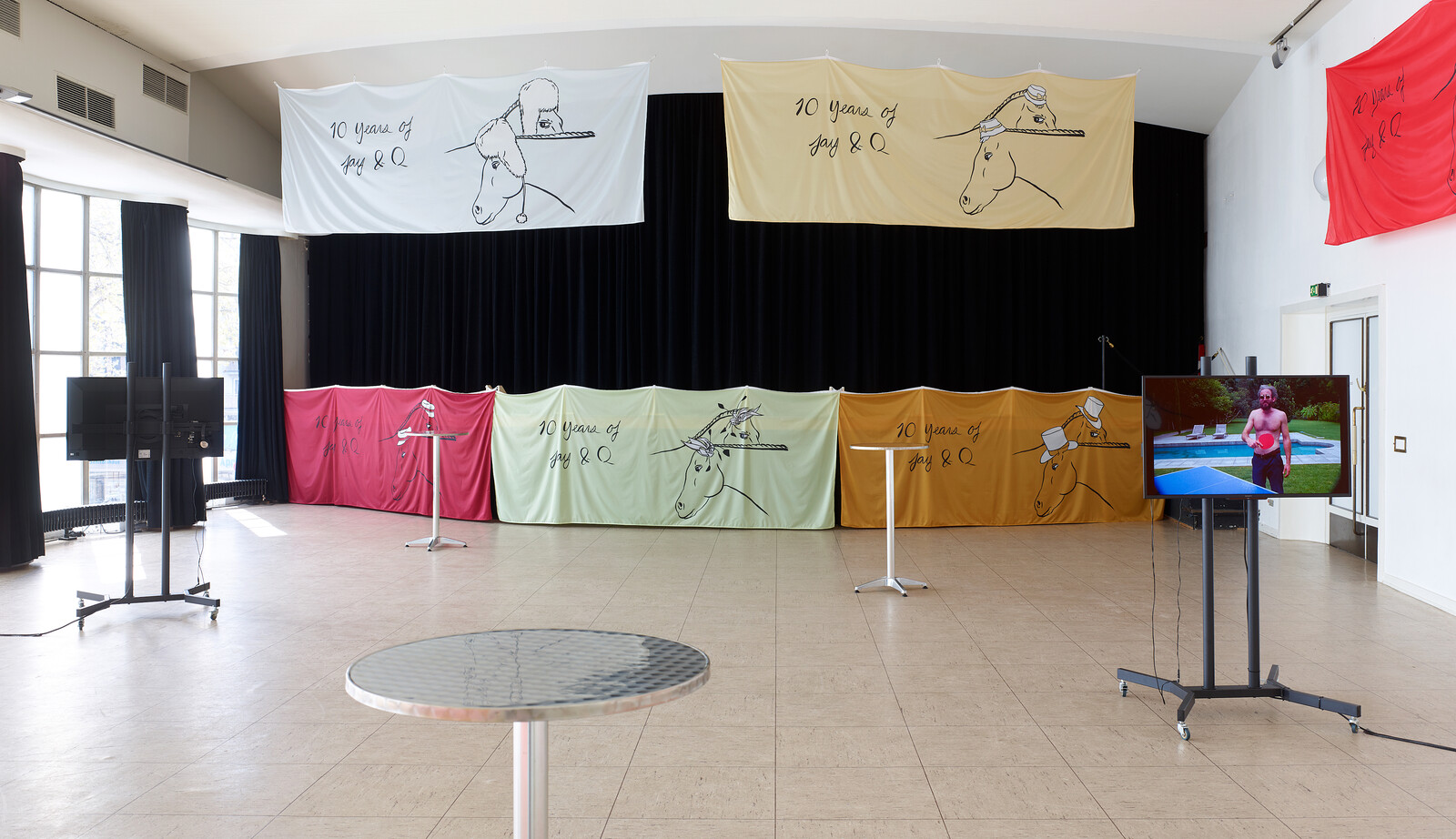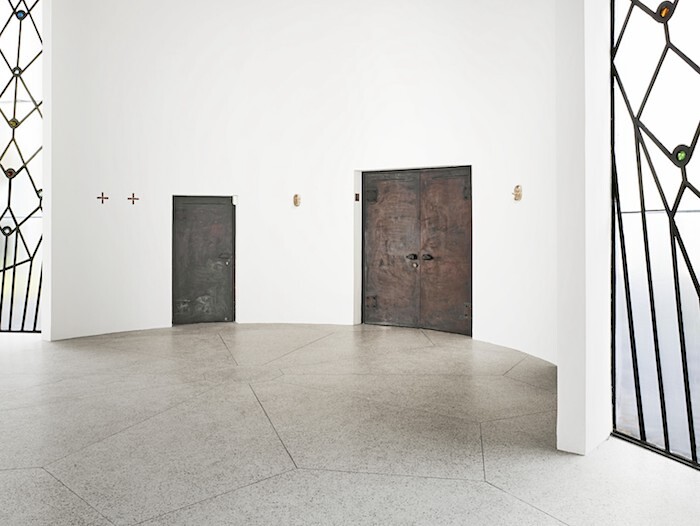Categories
Subjects
Authors
Artists
Venues
Locations
Calendar
Filter
Done
June 21, 2019 – Review
Jay Chung & Q Takeki Maeda’s “The Auratic Narrative”
Helena Tatay

The title of Jay Chung & Q Takeki Maeda’s exhibition, “The Auratic Narrative,” alludes to the kind of stories collectively told and repeated by art professionals to frame artists or their works in a way that contributes to their aura, or their presentation as unique and authentic, while creating “fictional expectations” of a future success.
Text and art wrestle throughout the show, which is divided into four chapters, each of which takes up one floor of the Kölnischer Kunstverein and includes, alongside the works, a long introductory text by the artists, who write in a singular I. Surprisingly, the speech of this self is molded from an amalgam of quotes from other artists. On the wall at the entrance, the text for the first chapter begins, “I hate competition, but the reality is that artists are engaged in a kind of race,” and carries on about the roles and games artists must play to achieve success. If the four chapters’ narratives, articulated as four stages in an artist’s life, have a personal, emotional tone that is easy to empathize with, the works are displayed in a sober, hermetic presentation. No text, only a leaflet with a floorplan and the works’ titles. …
January 30, 2017 – Review
Sherrie Levine’s “15 White Moonlight Paintings”
Stefan Heidenreich

A church, before being appropriated for something beyond its original purpose, needs to undergo a ritual called “profanation.” The procedure is a sort of reverse engineering of the initial consecration. What once belonged to a god is handed back to human life. “And if ‘to consecrate’ (sacrare) was the term that indicated the removal of things from the human law, ‘to profane’ meant, conversely, to return them to the free use of men,” writes Giorgio Agamben.
In the early 1950s, architect Dominikus Böhm was asked to build a church in the village of Kalscheuren, on the outskirts of Cologne. He let his son, Gottfried Böhm, actualize his preliminary design. (The younger Böhm would later become famous for his sculptural, crystal-shaped churches, and would be the first German architect to receive the Pritzker prize.) In Kalscheuren, slim pillars around the outside of a circular hall hold a flat, mushroom-shaped roof that makes the building look like a concrete model of a Mongolian yurt. Some consider it one of the most important postwar churches in the Rhineland. Yet, the fame of the monument did not prevent Catholicism’s decline, and in 2006, on May 25, 50 years after its consecration, the last service took …